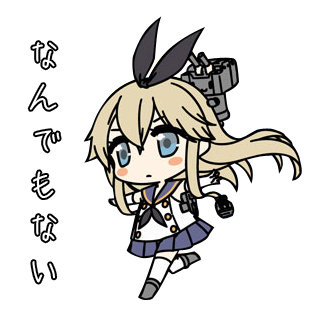And part 3.
#62: “The Greenlight Process – Part 3”
Published in 2016/06/30 issue
The last two columns have been about the “greenlight process”—a method used by foreign game studios and publishers such as Ubisoft. Last time, I said that using the greenlight process doesn’t eliminate inspiration and aesthetic sense from game or product development. So then, why is it that we don’t see Japanese game companies using this approach?
The way I see it, the Japanese game industry completely separates game development from management. There are several reasons for this.
First off, Japan’s video game industry began on two axles: table cabinet games that you’d find in cafes and computer games. The first commercial video game was created by Atari[1], an American company. Their early titles like Pong and Breakout were derivations from the first category. Manufacturers of jukeboxes[2] and similar products found out about games this way and got into that business. Meanwhile, the second category was the result of using PCs for game development. However, both categories began because young people at the time found them engaging.
Many of these young people were university students who neglected their studies in favour of game development (or just using PCs in general). Industry professionals noticed this and gave PCs (Apple IIs) to university students and the young technicians in their companies. The games they made would be sold with the rest of the companies’ products.
In the 40 years that have passed since then, I don’t think there’s been a single evolution in how game development and management are handled in the Japanese game industry. The management side consists of management professionals who occupy themselves with assets and sales, while the development side sprints along, obsessed with creating games.
An extreme way to put it would be that the developers didn’t touch anything to do with management and management refrained from meddling with development. On top of that, the economic bubble and the video game bubble aligned, so video games were recognized as being incredibly profitable. During that time, several geniuses were converting simple ideas into games.
Since that’s how it was, the management side feared that intervening with developers would make the product fail because they didn’t know much about development. Meanwhile, the developers began to think that management wasn’t bothering them because they were profiting. It was inevitable that Japan’s game industry would take this course, and it wasn’t necessarily a good or bad thing.
Conversely, modern game development for HD consoles has become downright esoteric. The leading technology requires math to explain, the graphics sphere has been divided into many sections, and you need to have both technology and ideas. R&D is required for all of that new technology, so completing a project takes incomparably more staff than it did 15 years ago.
Of course, since the stakes are so high, people are discussing ways to minimize risk. The North American game industry has been arguing over workflows and development strategies for the past 15 years or so, experimenting with “agile” and “waterfall” approaches on real game development. I can’t cover the results this time, but at any rate, Japan’s market was still thriving at this time, so there was no need to discuss such things (this was in the golden age of the PlayStation 2).
Thus, Japan’s separation of development and management continued on, and they’re still only halfway to uniting. I believe that it’s taken this long for us to start experimenting with new game development methods because our game industry was so successful for so long.
Now of course, there still are geniuses creating masterpieces, but the bigger games get, the worse our market situation becomes. I’ve met many game developers and I still think Japan’s creators are worthy of praise—we’re definitely not being outdone by the rest of the world. But at the same time, I feel that the “efficiently compile your ideas into a game” approach is causing distress.
My own game development has been a series of trial and error, and I’ve certainly had my share of flops. Even as we continue to develop and maintain FFXIV, our core members and managers struggle hard every day, trying to find some way to make our development process better, faster, easier. We can only experiment with different methods because the management side is funding us, which in return means that we’re generating profit for their sake, not ours.
While having my discussion with the people at Ubisoft Quebec, I noticed that no matter what our stances were, we could have a serious argument about them while still respecting each other’s opinion. I don’t think that the greenlight process is the one true method for game development, but I at least acknowledge that it provides rules for the development and management sides to fight fair and square. It’s a tool that facilitates mutual improvement so that you can succeed in the market.
And at the same time, I was thinking “We can’t lose to them!”, so once again, I’m pondering how Japan should be making its games.
[1] Atari Inc. was the first video game development company in the world. It was founded in 1972. They created many famed works, but they also created the world’s most peculiar(?) game, E.T. Legend had it that the high volume of unsold ROMs was buried in concrete (and it was apparently true).
[2] A jukebox is a machine that stores many records, and you can insert money to play a song of your choice. Digital jukeboxes still exist in some places, like bowling alleys (surprisingly many?). Young people these days might not even know what records are anymore.
